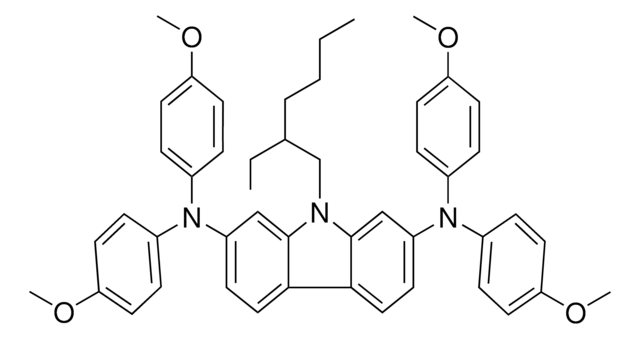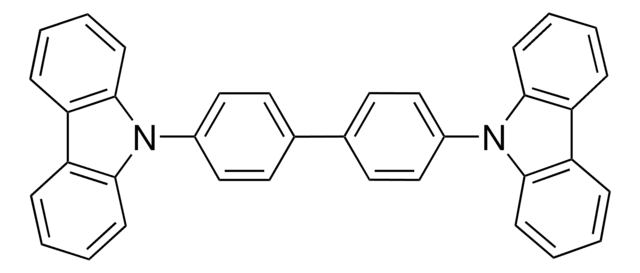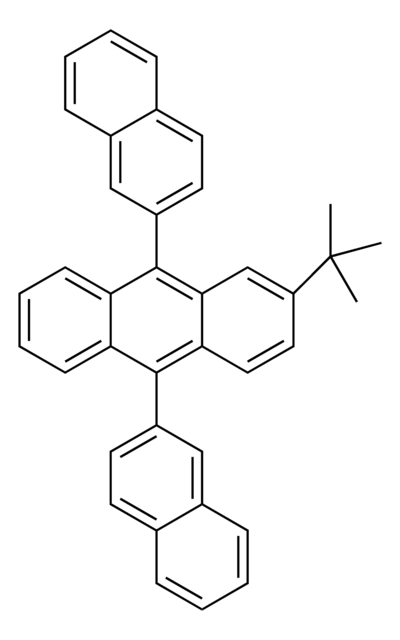932116
9-(Naphthalen-1-yl)-10-(naphthalen-2-yl)anthracene
≥99% (HPLC)
동의어(들):
Α,Β-ADN, 10-(1-Naphthalenyl)-9-(2-naphthalenyl)anthracene, 3,3′′,5,5′′-Tetra(3-pyridyl)-1,1′:3′,1′′-terbenzene, 9-(1-Naphthyl)-10-(2-naphthyl) anthracene, 9-(1-Naphthyl)-10-(2-naphthyl)anthracene, 9-(1-naphthyl)-10-(2-naphthyl) anthracene, 9-(Naphthalen-1-yl)-10-(naphthalen-2-yl)anthracene, 9-Naphthalen-1-yl-10-naphthalen-2-yl-anthracene, 9-Naphthalen-1-yl-10-naphthalen-2-ylanthracene, a,beta-AND
로그인조직 및 계약 가격 보기
모든 사진(2)
About This Item
실험식(Hill 표기법):
C34H22
CAS Number:
Molecular Weight:
430.54
MDL number:
UNSPSC 코드:
12352005
NACRES:
NA.23
추천 제품
Grade
sublimed grade
Quality Level
분석
≥99% (HPLC)
손실
0.5%, .> 250 °C (weight loss)
solubility
chloroform: soluble
dichloromethane: soluble
애플리케이션
9-(Naphthalen-1-yl)-10-(naphthalen-2-yl)anthracene can be used as a host material in the emissive layer of organic light emitting diodes (OLEDs) devices. It can also be used as a phosphorescent emitter in OLEDs when doped with appropriate metals such as iridium or platinum.
It has been shown to have good stability and exhibits a broad absorption spectrum. 9-(1-Naphthyl)-10-(2-naphthyl)anthracene is luminescent, emitting both fluorescent and phosphorescent light. The material is fabricated using the Suzuki coupling reaction. Used in OLEDs as Fluorescent Host with superb lifetime. It can also be used as a surface active agent or surfactant in industrial applications.
Storage Class Code
11 - Combustible Solids
WGK
WGK 3
Flash Point (°F)
Not applicable
Flash Point (°C)
Not applicable
가장 최신 버전 중 하나를 선택하세요:
Tsubasa Sasaki et al.
Nature communications, 12(1), 2706-2706 (2021-05-13)
Although significant progress has been made in the development of light-emitting materials for organic light-emitting diodes along with the elucidation of emission mechanisms, the electron injection/transport mechanism remains unclear, and the materials used for electron injection/transport have been basically unchanged
자사의 과학자팀은 생명 과학, 재료 과학, 화학 합성, 크로마토그래피, 분석 및 기타 많은 영역을 포함한 모든 과학 분야에 경험이 있습니다..
고객지원팀으로 연락바랍니다.
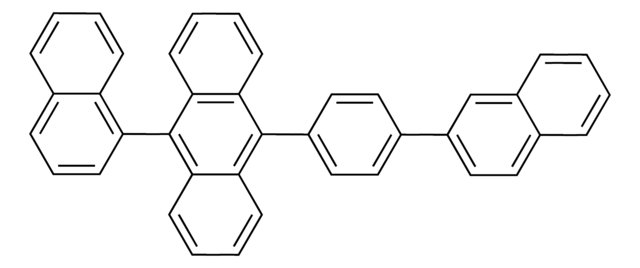
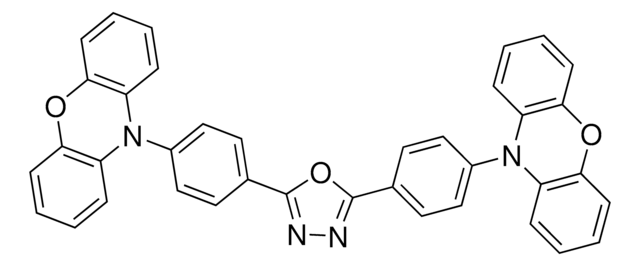
![N-([1,1′-Biphenyl]-4-yl)-9,9-dimethyl-N-(4-(9-phenyl-9H-carbazol-3-yl)phenyl)-9H-fluoren-2-amine ≥97%](/deepweb/assets/sigmaaldrich/product/structures/334/842/a358db6a-5ec8-4c88-902f-856ed7d79fb6/640/a358db6a-5ec8-4c88-902f-856ed7d79fb6.png)
![Di-[4-(N,N-di-p-tolyl-amino)-phenyl]cyclohexane ≥97% (HPLC)](/deepweb/assets/sigmaaldrich/product/structures/111/787/16bde1ce-c76d-46d6-9e1f-9ce09f82d038/640/16bde1ce-c76d-46d6-9e1f-9ce09f82d038.png)
